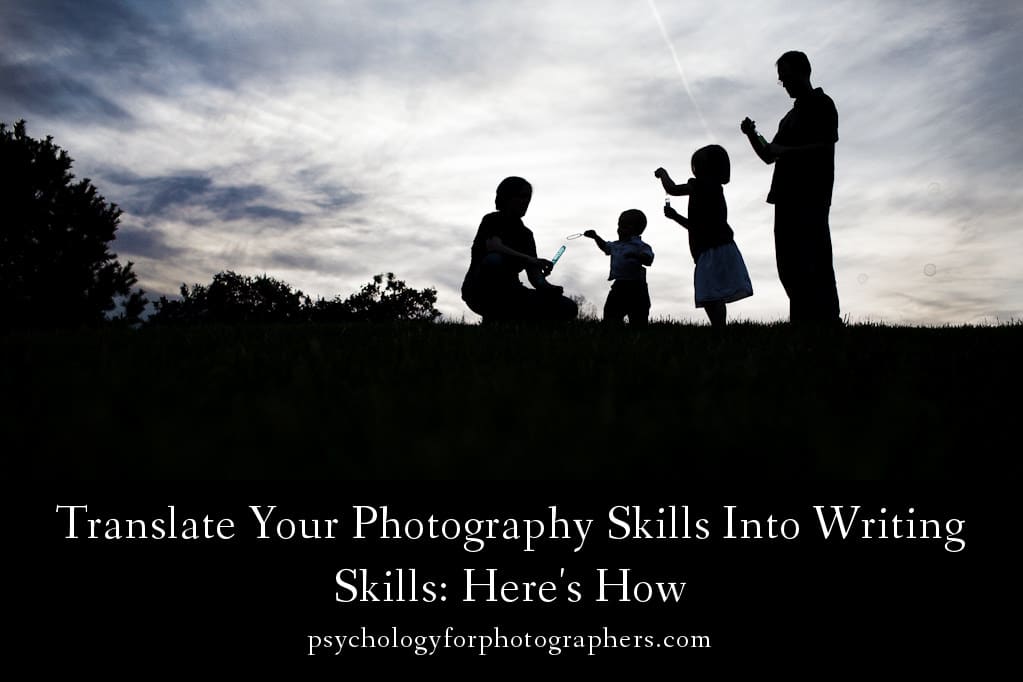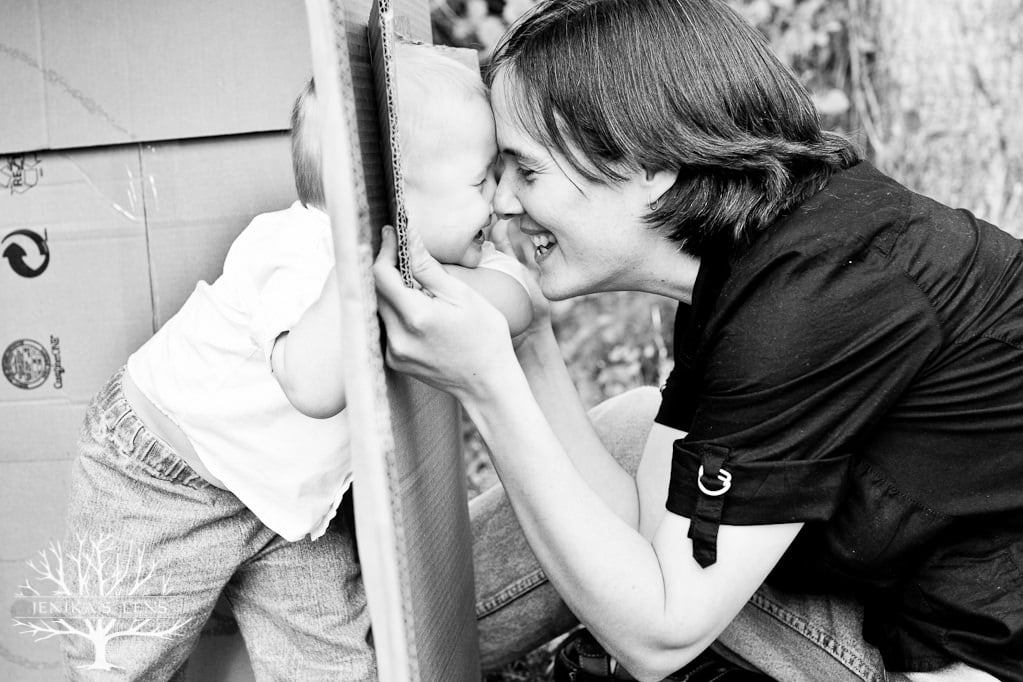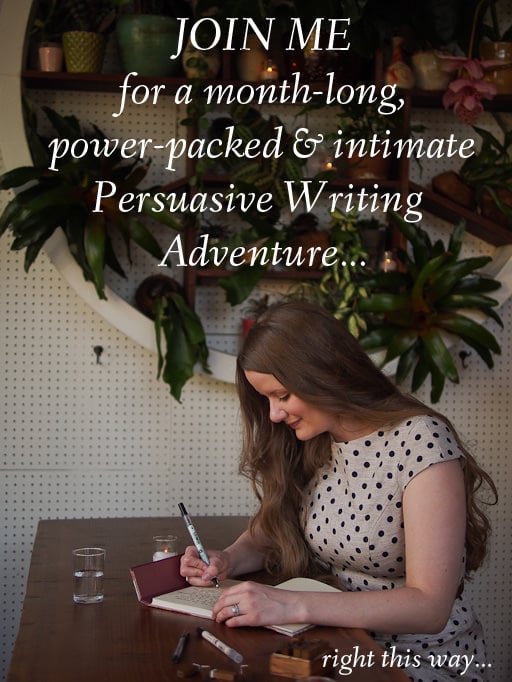The Blog Library
Translate Your Photography Skills Into Writing Skills: Here’s How
You’re on a shoot creating photographs. What goes through your mind to help you take interesting photos, rather than just run-of-the-mill photos?
(Let’s assume technical competence and basic artistic ability are a given.)
Take a second and make a mental list. If you wanted to take interesting and pause-worthy images, what would you do?
And after you posted the images on Facebook, imagine you’re looking over the shoulder of someone clicking through the album. Which photos do they keep clicking through, and which photos make them stop, stare, and lean closer?
The same things that make for interesting photographs are the same things that create interesting writing. Let’s look at just a few:
1) Search for a different perspective.

Photography 101, right? Sure, you can shoot an entire event walking around with your camera at eye level – you will get some great images.
But in addition to that –
What if you bend your knees? Climb a staircase? Lay down and shoot from the ground? Shoot through glass?
Of course you don’t lie on the ground for the sake of lying on the ground – it’s not as though that automatically makes an outstanding photo. There has to be a reason.
But we all intuitively know that moving your feet and getting into just the right perspective for what you want to shoot is a component of interesting imagery.
It’s the same in writing.
Retelling something in the first person (“I went to the park, I love this family,” etc) is the written equivalent of walking around with your camera at eye level. It’s one valid and useful way to do things.
But what happens if you take a different perspective?
What if you told the story of the family photoshoot from the perspective of the two-year-old?
What if you stepped outside the first person “I” and wrote like you were the omniscient narrator of a novel (“she walked down the stairs and paused, as though she had just remembered something…”)?
What if you abandoned sentences all together and captioned each image in a post with a single word?
Unexpected things make people stop and stare. In images as well as in writing. Next time you post, try taking a different perspective. Bend your knees or climb a staircase, so to speak.
2) Grab the right slice in time.

Which gallery of party images would you rather browse:
An album full of 100 photos cataloguing the chairs, the walls, the ceiling, the face of each guest, the welcome sign, and the place cards?
Or ten images that sum up the event:
-Three high school friends reuniting for the first time in half a decade, two throwing their arms out to embrace each other while the third stands back and presses her hands to her smiling lips,
-A little girl, grinning impishly, stealing a piece of cake and looking back to see if her mother is watching
-I’m sure you can imagine the rest!
You know intuitively that telling a story of a party involves some scene-setting and showing off important details, yes.
But telling the story of the party also involves grabbing the key slices in time. This is what makes you a good photographer – putting yourself in the right place at the right time to capture just the right moment – the one we know that will make people smile and say “Yep, that’s so her….”
It’s the same in writing.
Many blog posts describing shoots simply catalogue what happened. We went to this place. We took great photos. We had so much fun. I love this family. The end.
It’s the equivalent of photographing the ceiling, the walls, the floor – yes, we know that you probably went somewhere and had fun. But what of it? What happened? Why was it fun? Prove it!
We talk a good game about capturing moments with our cameras. We can do the same thing with our words. And the good news is, you’re already an expert at knowing which moments are good to capture. The challenge is to simply describe them:
Instead of the “We went here, we had fun” post, why not give the reader a single slice in time?
The little girl escaping mid-diaper change and running pantsless through the house,
the Dad who secretly wiped a tear away while he watched his wife and children playing,
the groom drawing a long, slow, breath as the first notes of the wedding march are played…
Recounting just one or two of the key moments for your readers can have more of an impact than giving a quick “we did this, then we did that” overview of the day.
3) Three words: Raw human emotion.

Humans like looking at faces. From infancy, we prefer looking at faces or face-like things over other images. Faces are a source of emotional and social information, they tell us what might happen next or what we should do.
We can understand facial expressions and emotions long before we have the words to describe them. Facial and emotional cues are often the most useful sources of information to be had, and we are terribly interested in the emotions of others.
Capturing faces and emotions in photos might even be one of your main jobs.
Interestingly, even “bad” photos still hold our attention if they capture emotion.
Have you ever had an image of a family member come out slightly blurry, but you kept it anyway because their facial expression meant something to you?
Have you ever shown a client a slightly sub-par image that turned out to be their favorite because of someone’s expression? We prioritize emotion over many other things.
It is – you guessed it – the same in writing.

You can always make things more interesting by focusing on emotions. The emotions you felt, the emotions you observed in others, the emotions you imagined others had.
Why do you think teasers for reality shows always show the most explosive emotional moments? Because it’s the fastest way to draw someone in.
No, I don’t suggest that wedding photographers blog about the time the mother-in-law stormed out like a Kardashian (that blog post would generate a lot of traffic, guaranteed, but it wouldn’t be good for business).
But there are emotions present that are beyond just the mere labels we throw out – things like “they were happy” and “the guests were thrilled.”
Instead, describe what you saw in the moment and allow the emotion to well up inside the reader. Without ever labeling it all.
Simply describe the dad watching the bride walking down the aisle, and how his mind flashes back to helping her put worms on hooks in a leaky fishing boat when she was six, and he knows he’ll never get to do that again – but at least she may get to do it with her own kids soon. Allow the reader to fill in the emotional blanks – you don’t need to tell them, they’ll understand it without you saying another word.
Use words to trace the facial expressions and the events behind them, and you’ll tap into a powerful source of magnetic material.
And the thing is, even if you can’t write it exactly – the written equivalent of a blurry photo – emotion can still come through.

Even if you feel your pen can’t pull everything onto the page, can’t quite get the full effect of the leaky boat and the worm, or adequately put the gowned bride in the aisle – the attempt still bears fruit. Just as we can discern emotion from a blurry photo, we can pull it out of imperfect writing. Try it out – it will become clearer and crisper the more you practice, just like in your photos.
As a photographer, you’ve already developed skills that are central to good writing.
Observing. Finding emotion. Narrowing down to show the exact right moment. Climbing around to find a new perspective.
You might be changing mediums, but the essentials are the same. You’re further ahead of the game than you can perhaps imagine.
~
Want to learn more? Eager to discover how to put your image skills to written uses?
I am teaching a writing course this coming month – Persuasive Writing, to be exact.
Created especially for photographers, you will learn to write in a way that…well…gets people to do what you want them to do. But in ways that readers will actually enjoy, and that feels intuitive and true to you.
Sales writing for nice people, if you will. Persuasion with both power and connection.
We’ll explore website, blog, and other kinds of writing, and how to fine-tune it to both sell and compel.
There are 14 spots to be a part of this adventure, and 10 (UPDATE: 13) are already gone.
Interested in joining us? Want details?
Don’t wait – click right here to learn more.
Registration closes Thursday, or when the remaining spot is filled.
P.S. One frequently asked question:
“I live in Australia/the UK/western Canada, can I participate? Will I have to get up at 4am?”
I’m not a morning person, why would I expect you to be? 😉
Lessons are delivered via PDF, so you can download them at your leisure. Conversations on Facebook will be available 24/7 for further engagement. One-on-one Skype slots will be available at a variety of times to accommodate different time zones. The class is already full of students from all of the above-listed places and more, so you’ll be in good company wherever you live.
Have other questions? Email me at jenika@psychologyforphotographers.com. You can also read more information here.




What an amazing article. Very timely too! I was just writing my next blog; reading back over it I’ve tried to keep your message in the forefront of my mind: ‘You can always make things more interesting by focusing on emotions. The emotions you felt, the emotions you observed in others, the emotions you imagined others had’. I’ve now made some changes and the story suddenly comes to life 🙂 Thanks again
Oh no, I missed out! Will you be running the course again at some stage?
Hi Charlotte! I probably will be, I don’t have estimates as to timeline yet. Would love to work with you! Are you on my email list? If so, you’ll get any updates. 😀
Yes I am on your email list, wouldn’t miss it for the world!
Why haven’t I stopped by before?? Through all the photography resources I get updates from, others always mention your website. I don’t know why just now I finally stopped for a visit! I missed your course, but I’m definitely gonna be a regular now 🙂
I love your site and insights!!
They often give me a lift up.
I would love to attend this workshop but I write in Dutch.
Hi Els! Thanks for your note! Hmm, well I can’t help out in Dutch, but wait until October – there may be something coming that WILL help you! 😀 Hope to see you around!
Great! I can’t wait till October.
I’m loving this website! What a unique perspective in which to view the inner-workings of the photographers viewpoint and what drives their work.
Hey there, this is a great article. great reading. thanks!
Thanks for sharing this. I’ll be on the lookout for how I can connect more deeply with emotion the next time I write. You’re so good at what you do. Thank you for bringing this approach to all of your readers.
I loved your list of ideas for the different perspectives. I will have to try a project from the view point from another person.
Wow, what a brilliant article – it was exactly what I was searching for! I’m off to read the rest of your site now, such a great resource! Thanks!
Never knew that photography can actually have a strong link between enhancing the writing skills as well. This blog is briefing the views that one could build when it comes to interlink the writing and photographing. Very helpful because one could improve and dissect the elements that needs to require in both the areas.